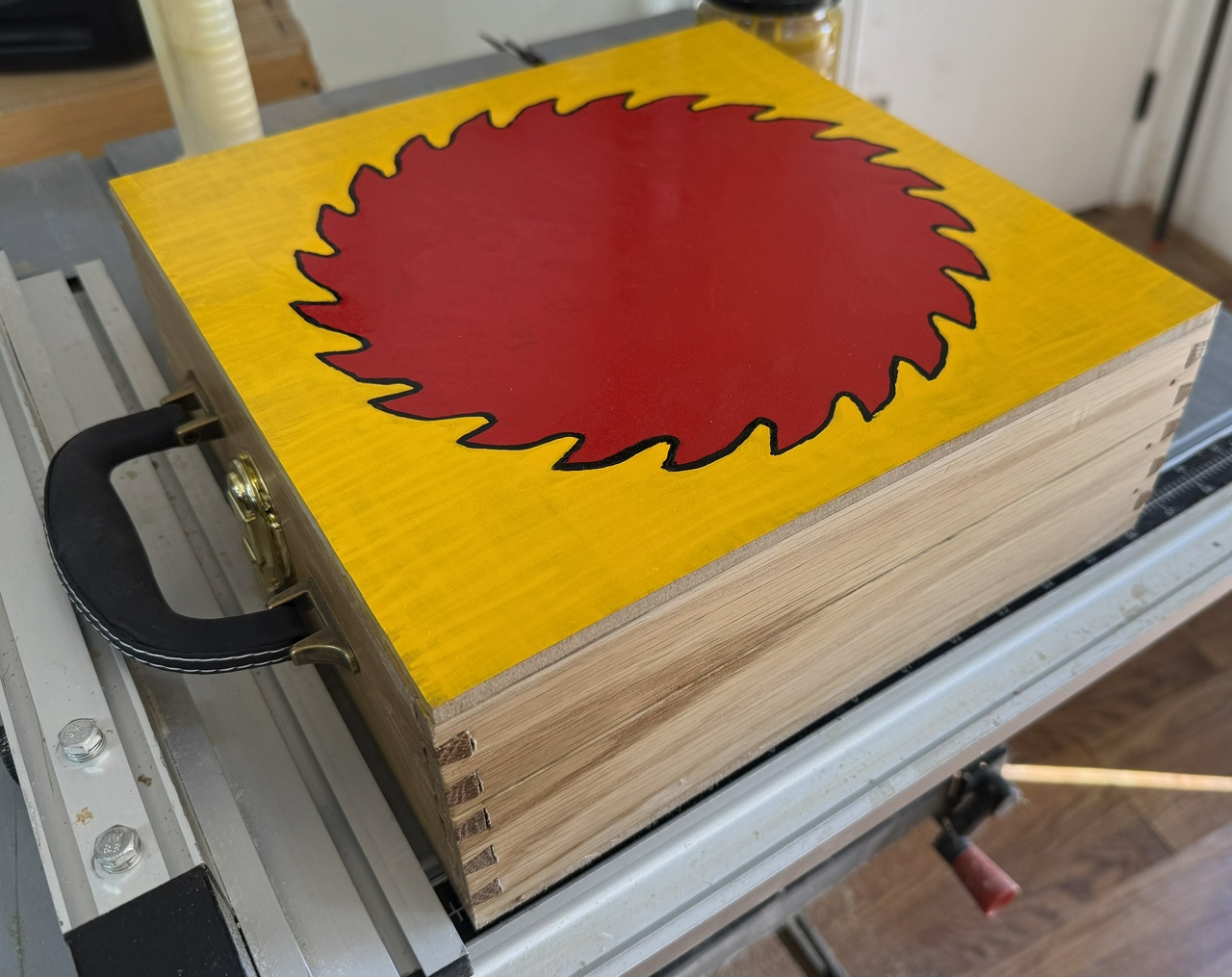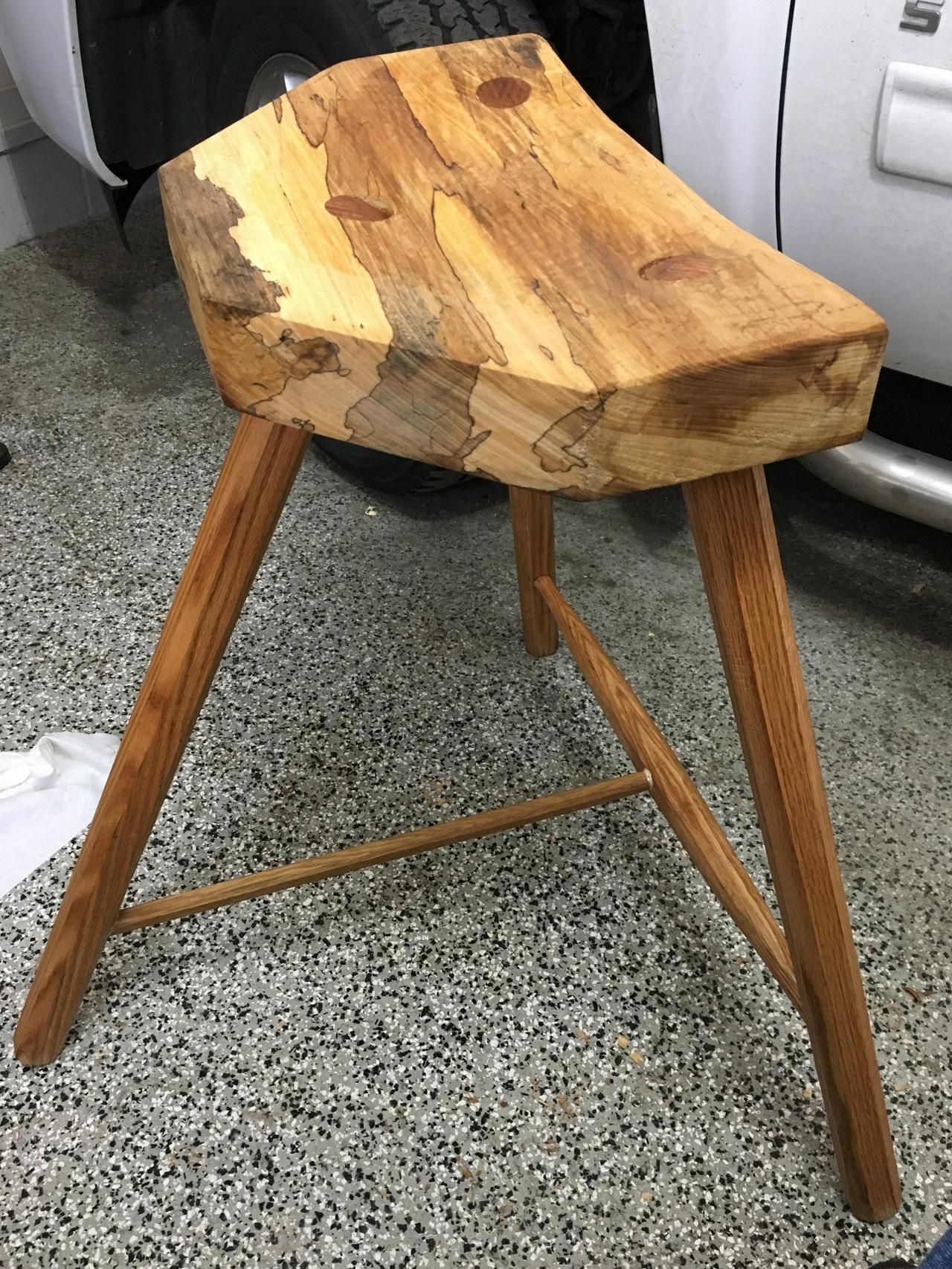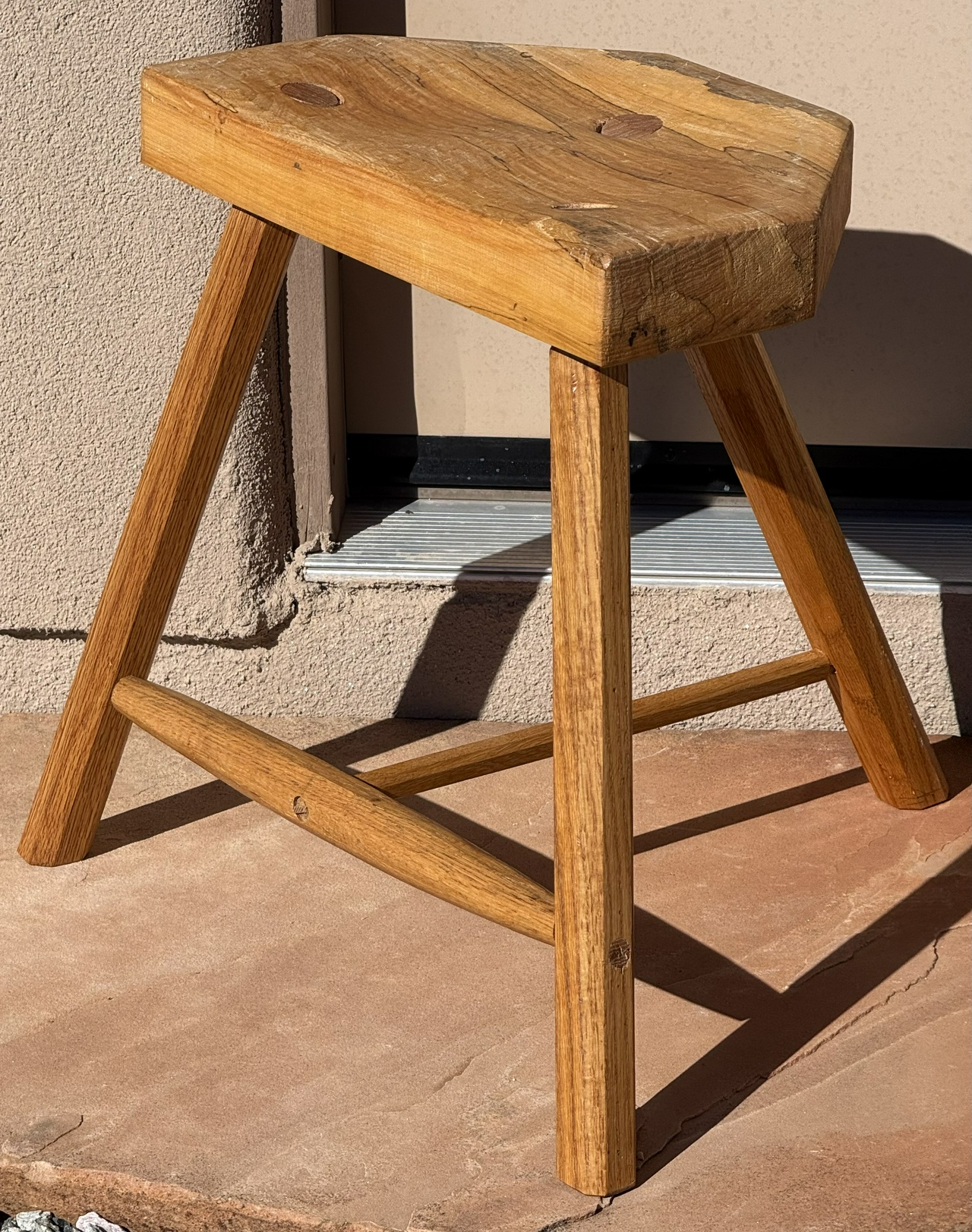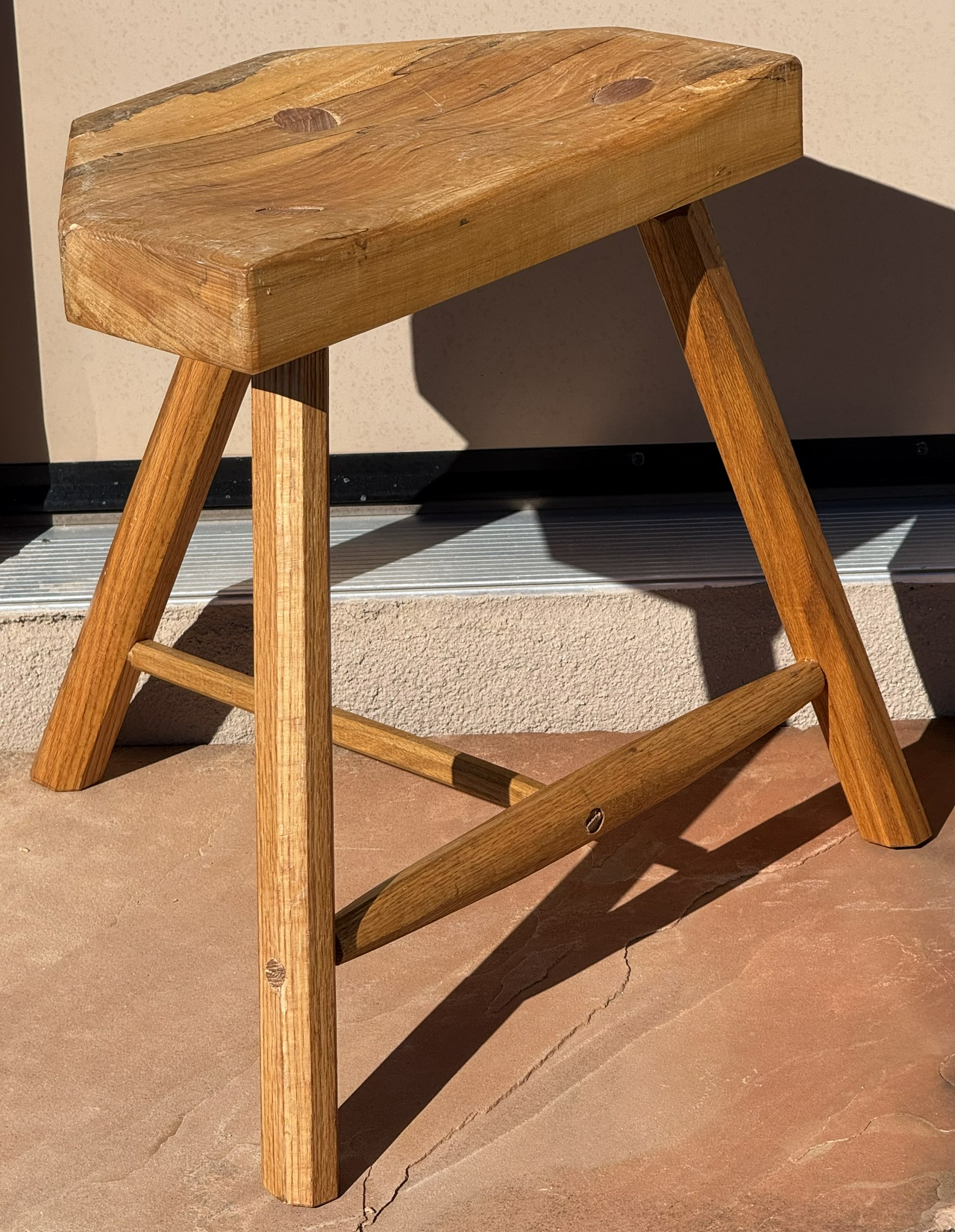Another type of grain filling is when you’re finishing and have some small imperfections, either from tear-out or from pores in the wood. Ideally, you fix as many of these problems as possible before applying any finish, but sometimes things don’t work out perfectly. This is also basically the method used in French Polishing (though that uses rottenstone rather than sandpaper as the abrasive).
Note that all of the pictures here show about 1 square inch of surface (2.5 cm square), so you can get an idea of the scale of things.

In a Russian olive bowl I’m working on, I had a tiny bit of tear-out near the center of the bowl, as shown above. This wasn’t obvious until I got some shellac on the bowl. I’m going to fill this using shellac and a bit of sanding dust (which is probably going to be mostly shellac, as well, but will include some wood dust).

First I sand very lightly with 400 grit sandpaper. Finer will work, but will take longer. Coarser will leave visible scratches. I try to sand across the depressions, so sanding dust will be deposited in them, but I’ll also use a circular motion when I’m starting because it’s quicker and lets me see what direction will work best.
Then I put a drop of oil (I use tung oil, but linseed oil will work, too) and 4-5 drops of shellac on a piece of folded up cloth. Old t-shirts work great.
The shellac I use is roughly a one-and-a-half pound cut. That is, I dissolve about 2 oz of shellac flakes in 12 oz of alcohol. You can use a heavier cut, but don’t go any lighter.

I rub this mixture onto the sanded area, also working across the tear-out. If you go with the direction of the tear-out, the cloth will tend to pull the dust back out, which is not what you want. You also don’t want to rub enough that the new shellac starts dissolving and removing previous layers of shellac. The idea is to build up the shellac, filling the voids. The oil is there mostly so that the partially cured shellac doesn’t “grab” your pad and get messed up as you’re adding a new layer on top of it (and partially dissolving the previous top layer). A little lubrication goes a long way towards making things work smoothly.
You can also see that the weave of the t-shirt has gotten filled with shellac. I typically use a fresh piece of t-shirt each session, because once the shellac is dried in the fabric, it won’t flex to follow the contours of the surface. You don’t want it dipping into every hollow, since you’re trying to fill those, but you don’t want it stiff as a board, either.

This is a fairly slow process. But each iteration you can see a little progress.

And at some point, the dust is almost entirely filling the voids, and not sitting on the surface. That means you’re getting close. The dust will compact as it gets wet, leaving a smaller void, but the results can look pretty darned good.

My take is that this is almost good enough. I think I’m going to varnish this bowl, which will flatten out the finish a little more, so maybe one more bit of sanding will do the trick. But I’m going to let the shellac cure for a while and then look at it and see. That will also give time for the little bit of oil present to cure, which will make for a tougher finish.
#technique #woodworking
Discuss...
Reply to this in the fediverse: @davepolaschek@writing.exchange





















](https://i.snap.as/Jg2XbMch.jpeg)
































